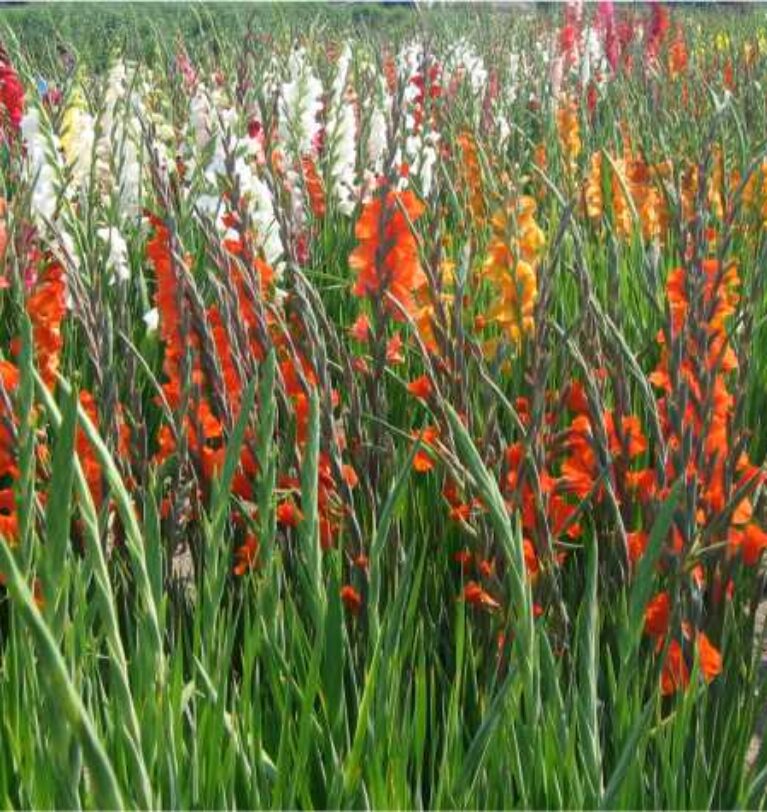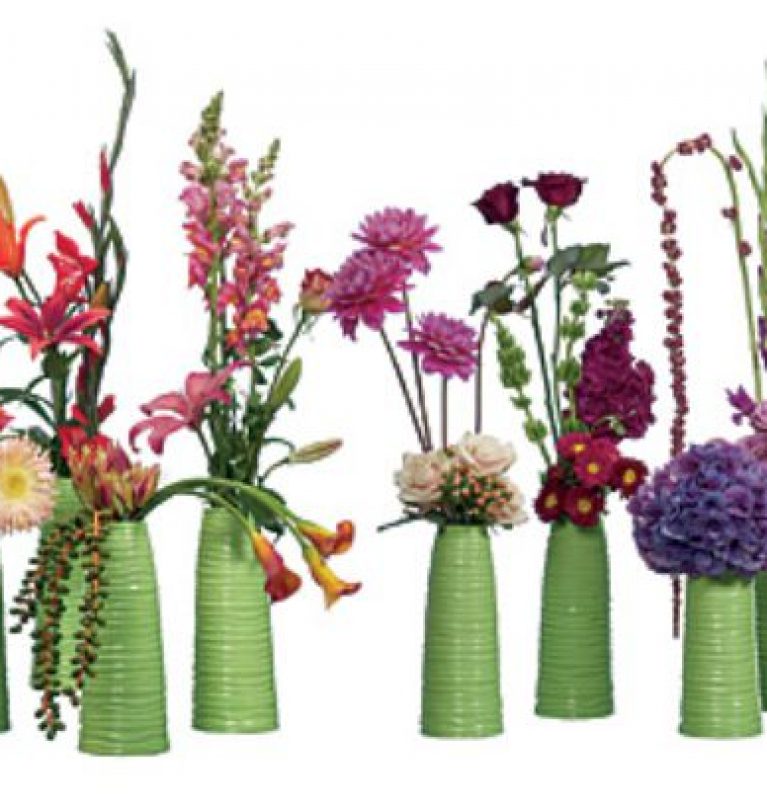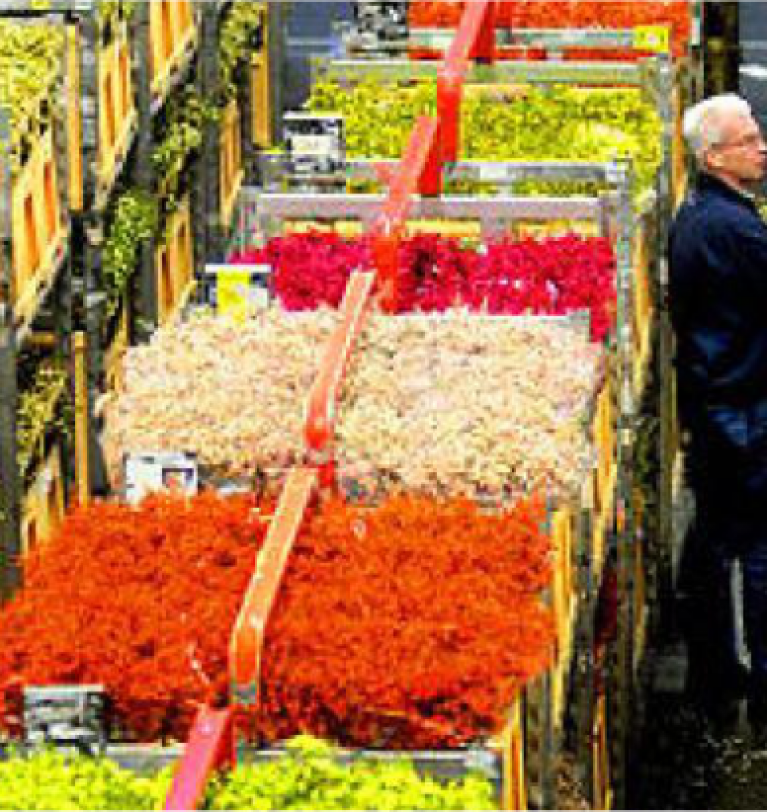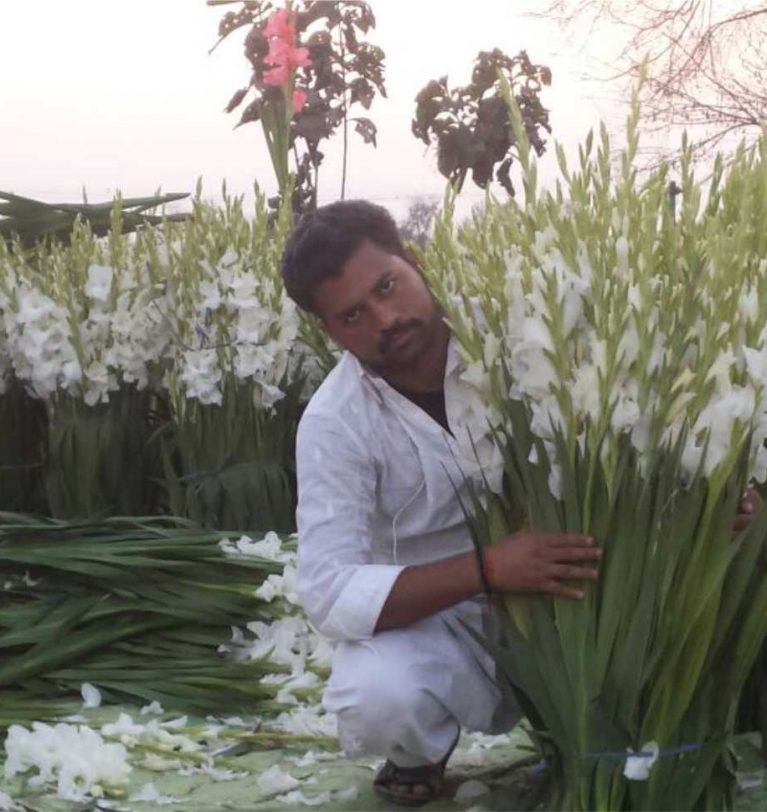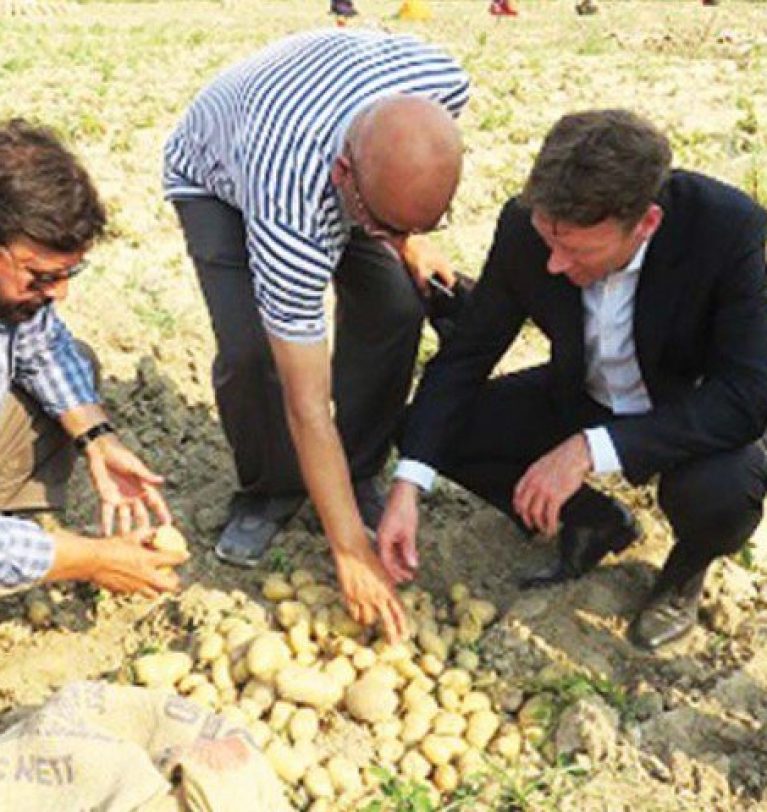OUR BLOG
The point of using Lorem Ipsum is that it has a more-or-less normal distribution of letters, as opposed to using 'Content here, content here', making it look like readable English
GET IN TOUCH
Latin words, combined with a handful of model sentence structures, to generate Lorem Ipsum which looks reasonable.
The Pothohar Plateau or Pothwar region has been bestowed with comparatively moderate climate quite suitable for the production of exotic bulbous flowers, especially the winter and early spring bulb flowers due to less water requirement compared to summer flowers. The ornamental bulb flowers are considered to be premium quality cut flowers especially Gladiolus and Liliums. The production of high quality flowers and bulbs in this region benefit from relatively cheap labour and suitable climate.
Keeping in view the brilliant prospects of bulbous flower production in Pothwar region, we have conducted research on various aspects of bulb flower production. Some of the interesting findings are as follows.
Bulb flowers: The bulbs or bulbous flowering plants, in broad sense, can be described as those plants which share the convenience of an underground food storage system. This remarkable feature means bulbs are incredibly rewarding to grow whether they are in the form of bulb, tuber, corm, rhizome or tuberous root. They all have the ability to generously reproduce themselves at no extra cost, and require little attention when dormant.
This combined with the fact that there are so many beautiful varieties, available in a multitude of colour and shapes, makes bulbs a useful design tool in the garden. You can colour your garden all the year round by choosing bulbs with different flowering time and suitable for different soil and climatic conditions. You can be more specific and choose shade loving bulbs, water loving bulbs, bulbs for containers. The bulbs, especially the winter bulbs, can satisfactorily be grown in containers such as pots, urns, troughs tubs and window boxes.
Choice of right Bulbs : The most important consideration for a gardener is the selection of proper bulb, where he wants to plant and effect he hopes to achieve. Fortunately, many bulb suppliers regularly issue catalogues so you can find out what bulbs are available including information about colour, shape and height. The most important factor in this regard is the country of origin and adaptability of the bulbs to your climate. Bulbs produced in Pakistan or in conditions similar to Pakistan mean they will be adaptable and thrive well.
Bulbs suitable for Pothwar: Adaptability of important winter/early spring exotic bulb flowers was checked through adaptation trials. And its was observed that Narcissus, Daffodil, Ranunculus, Freesia, Dutch Iris, Saparaxis, Gladiolus and Hyacinth can successfully be grown and further propagated in Pothwar climate. Narcissus, Freesia and Hyacinth have matchless fragrance and available in delightful colour options. Whereas Ranunculus, Gladiolus, Dutch Iris and Saparaxis provide creative and artistic approach for wonderful colour combinations due to magnificent colour range.
Bulbs come in such a palette of colours that people with enthusiasm can colour their gardens like a paintbrush to ‘paint’ their garden. To obtain ideal results, the package of production technology developed for local environmental conditions may be followed.
The production instructions for winter/early spring bulbs are detailed below.
Climate: Generally, bulbs need sufficient water during growing season. Most of the spring flowering bulbs require a moderately low temperature for their vegetative period that is, the stage when the plant grows to flowering size and bulb gains its maximum weight. One of the main reasons for failure in spring bulbs, after the first season, is due to high soil temperature, which often prevents the flower bud formation. Therefore, it is more appropriate to lift the mature bulbs from ground at the end of the season and store them in suitable storage conditions.
Planting: The appropriate time for planting spring bulb flowers is autumn, planting time does vary for different bulbs in different areas, so instructions from the producer or suppliers should be carefully followed. Generally the planting time is mid October – November. A good rule for the planting is to sow the bulb at a depth of three times its size.
Planting Geometry: When gardening with bulbs the possibilities are endless. They can be used effectively in many styles of landscape. But while positioning bulbs in the garden consider the size, the colour and the flowering time. In general the taller species are placed at the back and short stature at the front. Standard planting distance is not followed in personal arrangements and novel ideas of colour combinations. Therefore, bulbs provide full liberty in this regard.
While growing commercial scale farmers has to follow the commercial instructions available here
Soil and its preparation: The ideal soil type for most bulbous plants is a moderately fertile, sandy loam with a portion of organic matter. Drainage of soil is mandatory for bulb production, even in pot/container planting; proper pot filling method should be followed to ensure drainage. The garden bed should be dug to a depth of 45cm at least two times, with a fallow period between diggings for best results. The soil must be well worked in advance. If the soil is heavy clay, then 15cm of coarse sand and 15cm of well rotted organic matter can be mixed. Heavy application of compost, farm yard manure or leaf litter will also give good results. Phosphorus fertilisers may also be added in the range of 150-200 gm per square metre for better root growth and bulb weight.
Watering and Mulching: Bulbs dislike too much water so it is important to irrigate in a balanced way – not too much or too little. The thumb rule is to keep the bulbs area moist. Make sure drainage is adequate to avoid water logged conditions, which promote disease attack. Mulching is useful in some situations, as it helps to maintain proper moisture and an even temperature. It promotes drainage and is helpful in weed control. Slow decay of mulch material provides gradual feed to bulbs.
Lifting: When growing period is over and all the leaves die down, lift the bulbs in early summer. As a general rule, avoid watering once the leaves die down process has begun. As the leaves die down, the plant is storing up food to promote the next season flowers. It is preferable to lift all the bulbs in Pothwar region. However Hyacinth and Gladioli should always be lifted. The best way to store dormant bulbs is in a cool, dry, airy place in onion bag that let the air circulate and prevent diseases.
Pests and Diseases: Fortunately there are no serious pests and diseases on bulb flowers in the Pothwar region. For commercial farmers visit the /downloads All lifted stock should be examined carefully before storage and then again before planting. Hot water treatment can be used to control bulb-nematodes, if present. For the control of aphids and other pests, preventive spraying may be practiced, when necessary. Basel-rot infection may be observed sometimes. Well drained soil conditions and sparse but adequate watering will help and bulbs stored in airy environment will be protected.
Edited by greenworks
Courtesy The DAWN

What Cut Flower is That?
is the title of the newly launched guidebook for florists and provides a comprehensive overview of the exciting and diverse range of floristry products available. Initiated by the Australian flower industry, the book What Cut Flower is That? is written by Delwyn (Del) Thomas and Bettina Gollnow.
It packs the latest information about the exciting and diverse range of floristry products available into almost 200 pages, some of it never before published. Every entry has beautiful full colour photos, many of which were taken specifically for this book, while the detailed index ensures speedy access and enjoyable readability for all. Del is a horticulturist and fl oral designer with a lifetime of experience in the floriculture, nursery and garden and floristry industries. Bettina Gollnow, currently Communications and Extension Manager with Wild Flowers Australia, is an extension horticulturist with over 20 years of experience of working with
the Australian cut flower industry. “Making product information relevant and easy to find encourages florists and designers to use a wider variety of products,” explained co-author Del Thomas. She added, “From the A-Z of cut flower and foliage profiles to advice on care and handling, the information is presented in an easy to read format and design so that every fl oral artist and florist will want to leave it open on the workbench for quick easy reference.” Although this guidebook was developed in collaboration with the Australian flower industry, anyone with an interest in the care and handling of high quality cut flowers and foliage, will find this an essential reference.
What Cut Flower is That? includes a general introduction to the Australian flower industry along with extensive information regarding recognition of flower quality, essential post harvest care and typical problems. It includes the latest research and reliable industry knowledge. Industry members including growers, wholesalers, post harvest experts and leading florists were consulted to ensure that this manual provides the most accurate and up-to-date information on all products, with the initial draft reviewed by 15 industry specialists. Managing product quality and vase life, which are so important to consumers, is discussed in detail, and recommendations are offered for holding temperatures, cooling, hydration, hygiene, care in handling, conditioning, use of fl oral foam and advice to pass on to customers. The authors unravel the mysteries of subjects such as air embolisms, stem blockages, ethylene, geotropism, leaf blackening, uneven stem lengths, grey mould and issues associated with imported flowers that have the potential to reduce flower quality and vase life. This guidebook discusses these subjects and many more with straight forward advice on how to recognise and avoid problems. A wide range of the 116 cut flower and 30 foliage products profiled are grown globally, ensuring that highly seasonal products are readily available.

The Netherlands’ flower and plant exports, the world’s biggest, fell 2.3 percent last year as declining consumer purchasing power was compounded by cold spring weather in Europe and a summer heat wave that hurt sales.
Exports of tulips, roses, potted plants and other greenery fell to 5.27 billion euros ($7.13 billion) from 5.39 billion euros in 2012, the Dutch Agricultural Wholesale Board for Flowers and Plant reported. That beat a December outlook for shipments of 5.2 billion euros.
Spending on flowers and plants has been under pressure since the start of the economic crisis in 2008, according to the board. Unemployment in the countries sharing the euro rose to 12.1 percent in November from 11.8 percent a year earlier and 10.6 percent at the same time in 2011, Eurostat data show.
“In the past three years there’s been a slowdown in the growth markets for flowers and plants from the Netherlands,” the board wrote. “The important northwest Europe market, central Europe and especially southern Europe declined.”
German demand, which helped lift Dutch flower and plant exports in 2012 even as sales to France and Italy fell, joined the slump last year. Exports to Germany, the biggest client for Dutch blooms, slipped 4.8 percent to 1.57 billion euros. Dutch exporters expect flower and plant shipments to remain stable or post “very slight” growth in 2014, according to the board.
France’s imports of Dutch flowers and plants dropped 4.7 percent to 623 million euros, while shipments to Italy declined 6.6 percent to 279 million euros.
“A cold and extremely long spring weighed on sales of especially garden, terrace and balcony plants, even if flower sales benefited,” the board wrote. “The flower market came under pressure from the heat wave in the summer months.”
Germany had its second-wettest May in 132 years, while in France, May was an average 2 degrees Celsius (3.6 degrees Fahrenheit) colder than usual and 44 percent more rainy, according to weather office data.
U.K. purchases of greenery from the Netherlands rose 0.1 percent to 792 million euros and exports to Russia, the biggest market outside the European Union, rose 0.4 percent to 252.8 million euros.
To contact the reporter on this story: Rudy Ruitenberg in Paris at [email protected]

Gladiolus Cultivation in Pakistan
“ A sustainable flower farming option for progressive farmers“
Gladiolus flowers have become the market leader in terms of flowers selling and cultivation in Pakistan after roses and tube roses. Event Designers like this flowers a lot. As this is the only flower which gives filling flowers impact but also easy to find round the year in the Market.
Mr. Tahir Mahmood of Gullpashi a leading floral designer in Lahore said that “ without gladiolus flowers it is very hard to manage the flora event because of its year round availability in the market and secondly if we don’t find colors gladiolus we do color the white ones according to the client requirement. The only problem for us is the highly unpredicted price factor.”
White Gladiolus are being grown about 90% of the total gladiolus cultivation in Pakistan because farmers are growing according to the market forces. Pink and red are following. Farmers can plants 60,000 bulbs per acre averagely. Imported Gladiolus bulb cost them about Average 7 Rupees. If they go for full season cultivation with season specials they can plant about 6 acres. And can earn more than 4 million per season.
There are more than 2000 hectors under gladiolus cultivation in Pakistan. Mostly in Punjab like, Lahore, Shiekhupura, Kasur, Patoki, Okara, Faisalabad, Jhang districts are common, but glads are also cultivated in Rawalpindi, Islamabad , Multan, Bahawalpur, Rahim yaar Khan Regions since long. In Sind farmers are mostly growing gladiolus in and around Hyderabad. In KPK Abbotabad, Mansehra, Ugi, Swat and Dir regions.
Progressive farmers are taking keen interest in gladiolus because of its long cultivation and harvest time and its highly unpredictable price factors; sometime in the season from October to May one stick being sold for Rs. 5 and sometime 65. There is no other crop like gladiolus flowers when we compare whole sale markets and per acre profitably.
“The key to success in gladiolus is keep planting and keep selling” , Col. Tariq was on the opinion, one of the big gladiolus farmers outside Lahore. “In the end you have to look in to the average price per stick that is around Rs. 22 in the year 2014-15.”
There are 5 ever growing whole sale markets in Pakistan for the gladiolus flowers, Sagian Bypass Lahore, Allahabad, on Kasur depalpur Road, Pattoke, Teen Hatti Karachi and in Islamabad.
If gladiolus flower would grow with due care it has great returns on investment. It only requires well drained soil, Right Bulbs Size for right season, different gladiolus bulbs varieties for different seasons, and if grown on Drip these can give tremendous quality flower and more productivity.
In whole sale markets quality flower always gives profit.
Salt water has long been viewed as poison to farming systems, particularly when it comes to the crops we value most.
“None of the top five plants eaten by people — wheat, corn, rice, potatoes and soybeans — can tolerate salt,” agricultural experts Edward P. Glenn, J. Jed Brown and James W. O’Leary wrote 16 years ago, in a definitive Scientific American article. “Expose them to seawater, and they droop, shrivel and die within days.”
Now that scientific principle has been cracked — by a Dutch potato that drinks in salt and doesn’t break a sweat. A researcher and a farmer in the Netherlands teamed up to experiment with crops that could thrive in seawater. They set up shop on the island of Texel, a land rich with salt marshes. Along the way, they met an elderly Dutch farmer with an encyclopedic knowledge of thousands of potato varieties. Together, they created the salt-tolerant potato.
If you’re thinking this means a future of pre-salted veggies, hold it right there.
“What we find is that, if you tease a plant with salt, it compensates with more sugar,” says Dr. Argen de Vos, the researching half of the duo. “You’d have to eat many many kilos of potatoes before you’d exceed your recommended salt intake.”
If you’re thinking this means a future of pre-salted veggies, hold it right there.
De Vos and farmer Marc van Rijsselberghe partnered with MetaMeta, a Dutch development consultant, and laid out a game plan for bringing their potatoes to Pakistan’s salt-ridden lands. They were awarded USAid’s Securing Water for Food Grand Challenge in September, which gave them funding to go forth and spread their seed — $100,000 for the first year, and up to $400,000 over the following two years, provided they reach their technical and financial milestones, Amy C. Garrett, deputy press director for USAid, wrote in an email.
The Guardian positions the spud as “poised to launch a world food revolution,” but Glenn advises you take the news with a healthy grain of salt. The Guardian article says the potato is grown on ‘dilutions of seawater,’ not pure seawater,” he wrote in an email. “So I would say the breakthrough claimed in the article is unsubstantiated.”
It’s a cruel irony that 97.5 percent of the Earth’s water is saltwater, and less than one percent of the leftover freshwater is usable. Meanwhile, 70 percent of that freshwater is used for agricultural purposes. Over the years, the idea has been cautiously floated: What if we could feed crops with salt water? Glenn, Brown and O’Leary were something of pioneers in this corner of the agriculture market. Their 1998 Scientific American article presented their experiments with halophytes, plants that grow in highly saline water. They singled out Salicornia bigelovii, a plant that contains an oil similar to safflower oil, and showed promise as a source of both food and fuel.
It’s a cruel irony that 97.5 percent of the Earth’s water is saltwater, and less than one percent of the leftover freshwater is usable.
The researchers ended their research on a wistful note: “Our goal in the late 1970s was to establish the feasibility of seawater; we expected to see commercial farming within 10 years. Twenty years later seawater agriculture is still at the prototype stage of commercial development.”
Since then, more contenders have been floated: Remember this healthier version of a tomato, also grown in diluted salt water? You don’t? That’s because we’re still a long ways from any of these developments translating into money.
“We do have crops that can grow on seawater and demonstration farms have shown the feasibility, but it is still not economically feasible to replace conventional crops with seawater crops,” Glenn told us.
As for de Vos and Rijsselberghe’s potatoes, they’re on their way to Pakistan, where they’ll be planted on land that has been unproductive for years. May they cling to the soil and never let go.
ISLAMABAD:
A Breakthrough in Pakistan’s Potatoes Farming
Netherlands Ambassador Marcel de Vink visited Depalpur on Tuesday to witness the first-ever harvest of salt-resistant potatoes.
According to a statement issued by the Dutch Embassy, the project is combination of Dutch agricultural innovation and Pakistani entrepreneurship. “For a long time, it was not considered possible to grow potatoes in saline conditions. Conventional wisdom was that potatoes could only grow with water that was either fresh or at best moderately saline,” the statement said.
De Vink was excited to witness the successful brackish cultivation firsthand. “This new innovation is truly impressive. These unique potatoes – a prime example of Dutch innovation in agriculture – can enable cultivation in saline areas. This is a great opportunity for Pakistan and the world. I commend MetaMeta, Jaffer Brothers, Salt Farm Texel, the USAID and the SIDA on the tremendous success of this joint effort,” De Vink said.
“With support of the Securing Water for Food Programme – a combined effort of USAID, the SIDA and the Dutch Ministry of Foreign Affairs – specially selected salt tolerant potato varieties have been introduced at test locations in Sindh (Tando Allah Yar) and the Punjab (Okara). Planting of these seed potatoes started early December last year with farmers being incredulous that such difficult salt-affected soils (>8 dS/m) and water sources were chosen. Normally, potatoes would never come up in those conditions. Not in this case,” the statement said.
“The combination of salt tolerant varieties, adapted agricultural practices and conjunctive water use resulted in a very acceptable expected yield of 20 tonne of potatoes per hectare. The trials were a joint effort of Jaffer Brothers and MetaMeta Research and Salt Farm Texel,” the statement said. “With millions of hectares salt-affected land this innovation is a genuine breakthrough,” said Dr Maqbool of Jaffar Brothers. Dr Van Steenbergen of MetaMeta Research added: “The importance of growing high-value crops like potatoes in hostile environments goes beyond Pakistan.
Globally, no less than 1 billion hectares of land suffers from different forms of salinity.
Following this year’s encouraging trials, a larger number of locations are being developed to test the salt tolerance and to develop a balanced package of measures.”
This Document Compiled By : Mr. Saleem Ahmed of greenworks
Credits:
Dutch Embassy Islamabad
Express Tribune,


